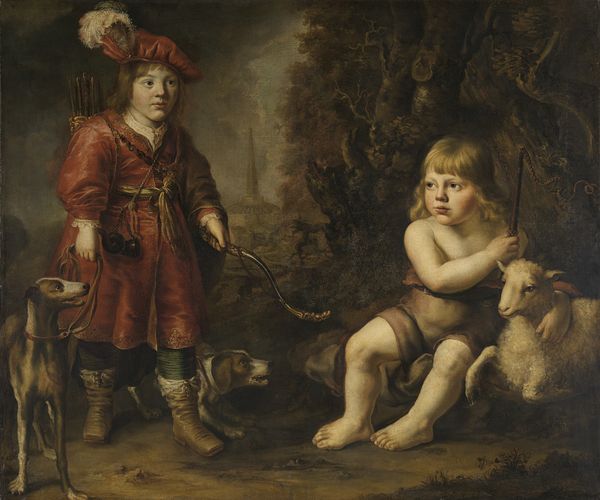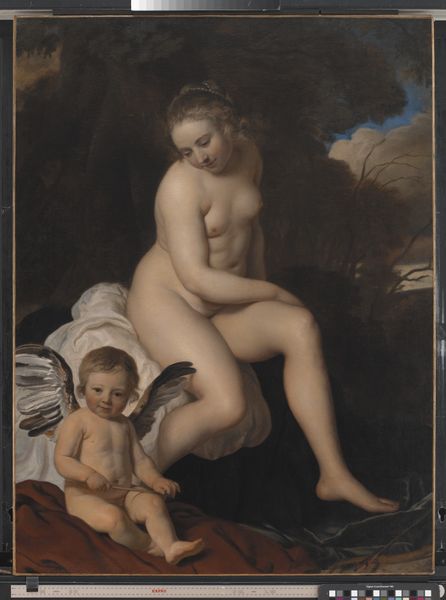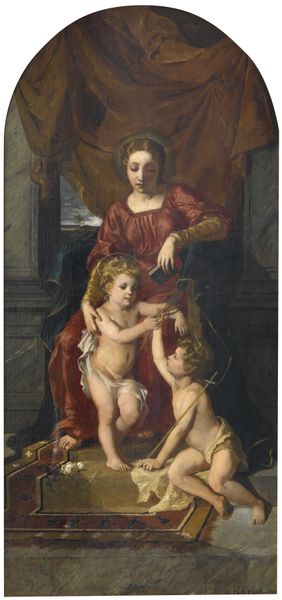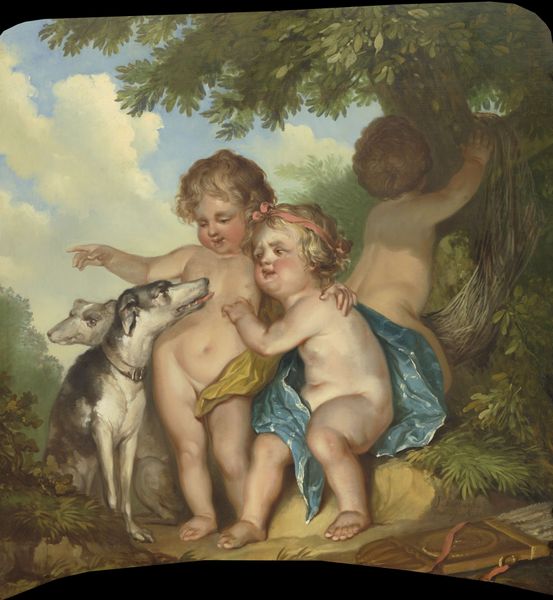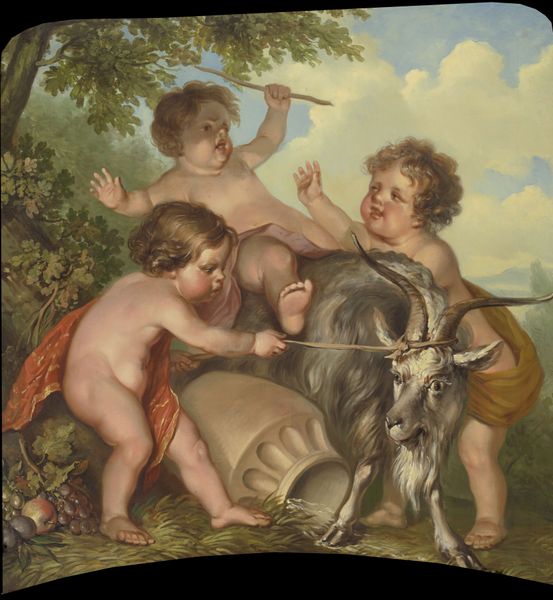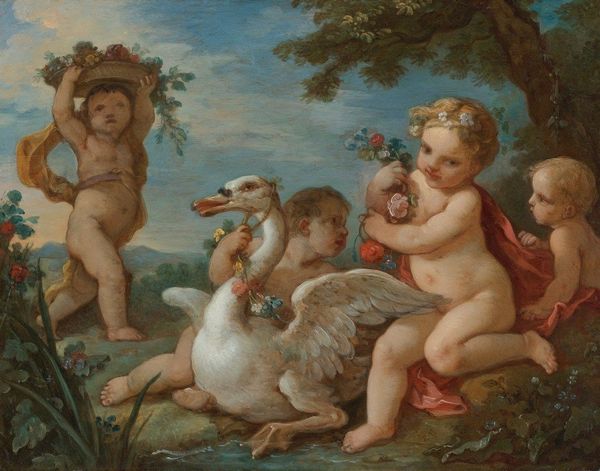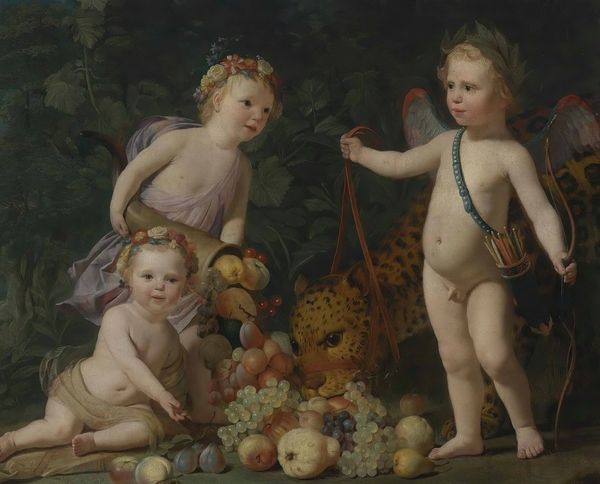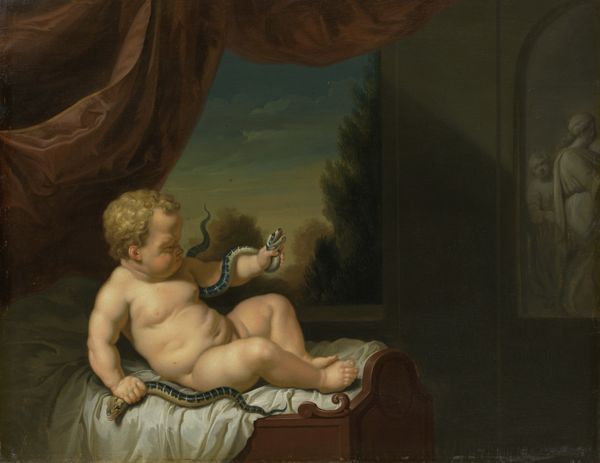
painting, oil-paint, canvas
#
gouache
#
allegory
#
baroque
#
painting
#
oil-paint
#
figuration
#
canvas
#
genre-painting
#
watercolor
Dimensions: 83.0 x 132.0 cm
Copyright: Public Domain
Art Historian: Welcome. We’re standing before a delightful canvas from the Städel Museum, titled "Two Putti with Garlands of Flowers." Its creation is attributed to an anonymous artist, sometime between 1700 and 1800. Artist: My initial impression? Mischief! Those cherubs look like they're in the middle of some divine prank, maybe yanking at that golden cloth is part of a game, and that is one grumpy baby on the right! Art Historian: Indeed. The playful interaction fits within the conventions of Baroque art, often characterized by its dynamism and theatricality. It's executed using oil paint, and you will notice there are many stylistic echoes of Baroque and Rococo, visible especially in the light that catches the cloth. Works like this served varied purposes. Sometimes, they’d function as allegory; the putti perhaps embodying love, spring, or ephemeral joy. Other times, the would decorate the houses of wealthy bourgeois, acting as genre scenes or even as family portraits. Artist: Ephemeral joy indeed. I can almost smell the perfume from those ridiculously oversized roses. But look closer—the landscape seems so serene, the light is buttery…yet that other little rascal looks utterly perturbed. It's that contrast, maybe between pleasure and unease, that really grabs me. Like they've stumbled upon some secret. Or are about to drop that massive vase. Art Historian: I think you hit on a key tension, yes! Consider the historical context: Europe then was a landscape of enormous social inequality masked by artistic depictions of frolicking children. A painting such as this one, in effect, is an allegory to class; with it, families might have demonstrated the happiness that allegedly reigned supreme under their dominion. These kinds of genre works also played into early modern market economics; wealthy collectors were extremely interested in scenes representing domestic life, joy, and wealth. Artist: I wonder about the anonymous artist—what their daily life might have been, hidden behind these joyful images commissioned to decorate someone’s drawing room. Art Historian: Indeed! Art history can be rather melancholic sometimes when we are confronted with unknown authorship. And speaking of melancholic, what kind of feeling do you take away from this picture, on our way out? Artist: I will certainly remember that sense of mischief tinged with unease. Something about it, for me, doesn’t fully let go. Art Historian: It seems those Baroque masters certainly knew how to strike a nerve that continues to resonate centuries later.
Comments
No comments
Be the first to comment and join the conversation on the ultimate creative platform.
